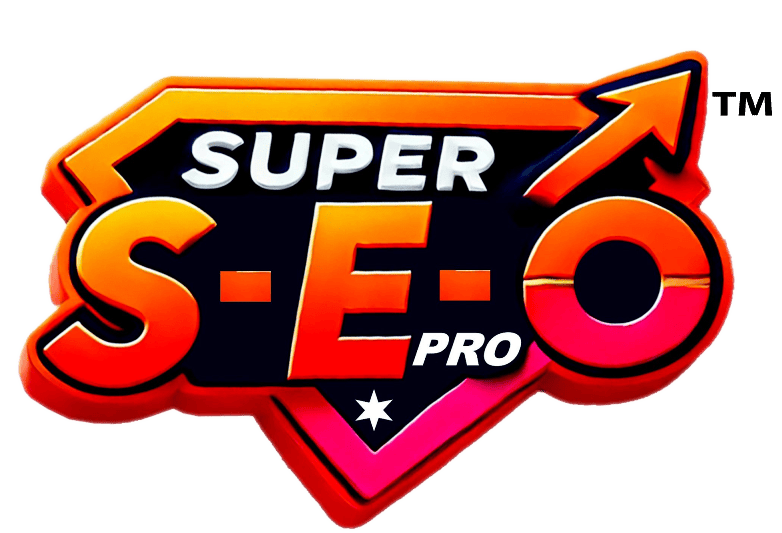

How to Create a Personal Website: Step-by-Step Guide 2025
A personal website is your digital home—a platform to showcase your portfolio, share insights, or build your professional brand. Whether you’re an artist, freelancer, entrepreneur, or simply someone who wants a personalized space online, building a website has never been easier. This comprehensive guide will walk you through every step to creating your personal website in 2025, from choosing a domain to maintaining it after launch.
1. Define Your Website’s Purpose
Before building your website, define its core purpose. Understanding what you want to achieve will guide every decision about its design and content. Here are some common goals for personal websites:
- Portfolio Website: Showcasing your creative work, such as design projects, photography, or writing.
- Resume or Professional Profile: Highlighting your skills, achievements, and experience to attract employers or clients.
- Personal Blog: Sharing stories, thoughts, hobbies, or expertise to connect with an audience.
- Freelance or Business Platform: Attracting customers by offering services or selling products online.
- Personal Branding: Establishing yourself as an authority in your field by hosting valuable content.
Pro Tip: Write down your goals, target audience, and the key message you want visitors to take away. This clarity will ensure your website meets your needs.
2. Choose Your Domain Name and Hosting
What is a Domain Name?
Your domain name is your website’s address (e.g., yourname.com). It’s the first impression people have of your site, so choose carefully:
- Keep it Simple: Use your full name, brand name, or a keyword reflecting your niche (e.g., johnsmithwrites.com).
- Avoid Numbers or Hyphens: These can confuse visitors.
- Use a Trustworthy Extension: Stick to popular extensions like .com, .net, or .me.
How to Register Your Domain
Use a registrar like Namecheap, Google Domains, or GoDaddy to register your domain. Prices typically range from $10–$20/year.
What is Web Hosting?
Web hosting is a service that stores your website’s files and makes them accessible online. In 2025, hosting services are faster and more user-friendly than ever.
Here are the best hosting options:
-
Budget-Friendly Hosting:
- Hostinger: Great for small websites with low traffic.
- Bluehost: Perfect for beginners, offering free domains for the first year.
-
Premium Hosting for Speed & Reliability:
- SiteGround: Reliable and fast for growing websites.
- Cloudways: For advanced users who want cloud hosting (e.g., AWS, Google Cloud).
-
Bundled Website Builders with Hosting:
- Wix and Squarespace: All-in-one solutions that provide hosting, templates, and easy website-building tools.
Pro Tip: If you want a hassle-free experience, platforms like Wix or Squarespace combine hosting and website building, making them ideal for beginners.
3. Select the Right Website-Building Platform
The platform you choose determines how your website looks and functions. In 2025, there are options for all skill levels:
No-Code Platforms for Beginners
- Wix: Drag-and-drop functionality with beautiful templates.
- Squarespace: Ideal for creatives with sleek, minimalist designs.
- Webflow: Offers more customization for advanced users but still user-friendly.
For More Control and Customization
- WordPress.org: The most flexible platform, but it requires technical know-how.
- Ghost: Focused on blogging with speed and simplicity.
- Shopify: Best for e-commerce if you plan to sell products.
Pro Tip: If you’re unsure, start with Wix or Squarespace, as they’re beginner-friendly and allow you to customize your site without technical skills.
4. Plan and Structure Your Website
A clear and logical website structure ensures visitors can navigate easily. Before building, create a sitemap (a visual plan of your site’s pages). Most personal websites include these essential pages:
-
Home Page
- A welcoming page with your name, a professional photo, and a short introduction or tagline.
- Include links to key sections like your portfolio or contact page.
-
About Page
- Share your background, story, and expertise.
- Make it personal and relatable, especially if you’re branding yourself.
-
Portfolio/Work Page
- Showcase your best work (images, videos, or case studies).
- Use tools like Lightbox to display media attractively.
-
Blog Page
- Optional, but great for sharing insights, hobbies, or expertise.
-
Contact Page
- Add a contact form, email address, and links to social media.
5. Design Your Website
A visually appealing design will leave a strong impression. Follow these design principles:
Choose a Modern Template
Most platforms offer templates. Pick one that aligns with your goals (e.g., a portfolio template for creatives or a blog template for writers).
Focus on Mobile Responsiveness
With over 70% of traffic coming from mobile devices, your site must look great on smartphones. Most platforms provide mobile optimization by default.
Use Professional Visuals
- Use high-resolution images from tools like Unsplash or Shutterstock.
- Use design tools like Canva to create custom graphics or banners.
Stick to a Cohesive Color Palette
Choose 2–3 complementary colors that reflect your personal brand. Websites like Coolors.co can help you find great palettes.
Typography Matters
Use easy-to-read fonts like Open Sans, Lato, or Montserrat. Avoid overly decorative or hard-to-read fonts.
Pro Tip: Simplicity is key. A clean, minimalistic design often works best for personal websites.
6. Add Engaging Content
Your content is the soul of your website. Here’s how to make it impactful:
-
Write for Your Audience
- Use a conversational tone to connect with readers.
- Write clear and concise copy; avoid jargon.
-
Use Strong Calls-to-Action (CTAs)
- Encourage visitors to take action, like “Contact Me,” “View My Portfolio,” or “Download My Resume.”
-
Optimize for SEO
- Include relevant keywords in titles, descriptions, and image alt text.
- Create valuable content to boost rankings (e.g., a blog about your niche).
-
Showcase Testimonials
- Add client or peer reviews to build trust.
7. Test Your Website Before Launch
Before going live, thoroughly test your site:
-
Mobile and Desktop Compatibility
- Test how it looks on different devices and screen sizes.
-
Loading Speed
- Use tools like PageSpeed Insights or GTmetrix to ensure fast loading times.
-
Broken Links
- Check for any links that don’t work using tools like BrokenLinkCheck.
-
Gather Feedback
- Ask friends or colleagues to browse your site and provide feedback.
8. Launch Your Website
When you’re ready, launch your site and start promoting it! Here are some ways to drive traffic:
- Share your website link on social media platforms like LinkedIn, Twitter, and Instagram.
- Add the link to your email signature, resume, and business cards.
- Regularly update your website with new content to keep visitors engaged.
- Use Google Analytics to track visitor behavior and optimize accordingly.
9. Maintain and Update Your Website
After launching, your job isn’t done. Regular updates keep your site fresh and relevant.
- Add new projects, blogs, or testimonials regularly.
- Refresh your design periodically to keep up with trends.
- Use analytics tools to monitor traffic and improve performance.
Conclusion
In 2025, creating a personal website is both accessible and essential. By following this step-by-step guide, you’ll have a polished, professional website that reflects your brand and connects you with your audience. So take the leap—your digital presence starts today!
Let me know if you need help choosing a platform or writing content!
sign up for newsletter
Join millions that receive weekly news, tips, and updates.

